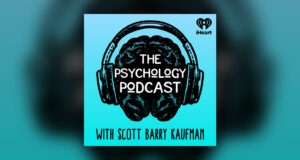
Childhood is naturally filled with emotional ups and downs. But a loss of interest in things always enjoyed and distancing from friends could be more than just developmental change.
Depression is complex. It’s both a standalone mental health disorder, known as major depressive disorder (MDD), and a feature in other disorders, like bipolar disorder and post-traumatic stress disorder (PTSD).
Symptoms of depression go beyond persistent low mood and energy. They can involve changes in behavior, impaired cognitive function, and somatic, or physical, symptoms.
In 2021 alone, as many as 20% of children in the United States between the ages of 12 – 17 years of age experienced a major depressive episode.
Depression symptoms can look differently in children compared to adults due to different life stages. For example, children may not demonstrate an obvious loss of interest in chores like an adult who lives on their own might.
Instead, signs will often involve a child’s individual interests and behaviors.
“For example,” says Dr. Louise Metcalf, psychologist and Founder/CEO of Gheorg, “if a child is normally a keen Minecrafter but they stop enjoying it with nothing seeming to replace it, and they are grumpy/irritable and sad, or flat emotionally, these are pretty strong signals of depression in children.”
Other signs your child might be experiencing depression include:
- unexplained drop in grades
- poor behavior reports from school
- crying often
- spending less time with friends
- sleeping more or less than usual
- expressing they’re not good at anything or that everything is their fault
- not caring about school, sports, or other activities they were once passionate about
- engaging in substance misuse and other risky behaviors
- frequent talking, writing, or drawing of death or dying
- running away
- irritability
- eating more or less than usual
Barriers to recognition
As challenging as it is to identify depression during the transitionary stage of childhood, there are other reasons childhood depression can go unnoticed.
According to school psychologist Cyrell Roberson, cultural disparities can also play a role in how symptoms of depression are recognized and perceived in children.
“Research shows that irritability in the average white teenager is often labeled as a symptom of depression, which it is,” he says. “However, the same behavior is often perceived as disruptive in Black and Latinx children, which can then lead to hopelessness because they’re misunderstood and the underlying issues aren’t identified and they ultimately go untreated.”
Depression is a brain disorder that involves changes to your brain’s function and structure. Its exact causes aren’t fully understood, but genetics, environmental factors, and psychological influences can all play a role in its development.
In addition to genetics and other underlying causes, certain factors may increase a child’s chances of experiencing depression.
“Causes can be quite diverse so this is challenging to answer precisely; however, certain events make depression more likely, such as traumatic events in the family,” says Metcalf.
She indicates these events can include:
Adverse life events aren’t the only possible contributors to childhood depression.
- a naturally pessimistic outlook
- sleep problems
- chronic medical illnesses, like diabetes
- other mental health conditions, like anxiety disorders
- substance use
- medication use
Children may also be more prone to developing depression if they have an insecure attachment to primary caregivers. According to a multi-level meta-analysis from 2019, insecure attachment to caregivers was seen as a predictor of depression among children.
Insecure attachment is a concept in psychology that refers to relationships between children and caregivers featuring anxiety and uncertainty, often caused by absent, emotionally distant, or abusive caregivers.
If you’re wondering when to speak with your child about depression, Roberson recommends asking yourself the following questions about your child:
- Have their bad days begun to outweigh their good days?
- Are they having insomnia or excessively sleeping?
- Do they have a hard time waking up for school?
- Is there evidence of poor concentration at home or at school?
- Are they no longer interested or showing enjoyment from their usual activities?
- Have they distanced themselves from family and friends?
- Are there maladaptive coping mechanisms, like substance misuse?
If the answer to any of these questions is “yes,” it may be time to have a conversation about depression.
“Parents can help best by helping children to feel comfortable talking about their thoughts first; don’t shy away if your child’s thoughts are dark like this,” says Metcalf. Tell them it is natural to feel like this sometimes but that all emotions come and go.”
She then suggests building comfort by having the whole family say three good things that happened to them that day, or three things they liked about that day.
For the caregiver, she suggests being sure to include one positive thing about the child experiencing depression.
As it becomes comfortable to talk about thoughts and emotions, it opens up the door for caregivers to have a discussion about depression.
According to national data, only 60% of children who experienced a major depressive episode in 2021 received treatment.
“If your child has persistent symptoms of depression that feel like [they] just won’t shift then always seek professional help; try not to wait more than a month,” Metcalf recommends. “Also if your child expresses a desire to end their life or is harming themselves, don’t panic, just go and seek professional help as quickly as you can.”
Childhood depression and adult depression are treated using psychotherapy approaches and medication. Psychotherapy, also known as “talk” therapy, utilizes different frameworks to address the underlying causes of depression while teaching children effective ways to cope with negative feelings in daily life.
In addition to psychotherapy, symptoms of depression in children can be treated with medications like antidepressants to help relieve impairing symptoms.
What sets depression apart from the typical childhood experience is the duration of symptoms and how they impact daily life. Unlike day-to-day experiences that cause emotional flux, depression involves impairing changes in thinking and behavior that persist over extended periods of time.
- constant depressed mood, which may show as irritable mood in children
- constant diminished interest or pleasure in all or almost all activities
- significant weight loss, which may show as inability to make expected weight in children
- sleep disturbances
- restlessness or slowed physical movement
- constant fatigue or low energy
- constant feelings of worthlessness or inappropriate guilt
- impaired concentration and decision-making
- suicide ideation
For a diagnosis, at least one symptom must be depressed mood or diminished interest/pleasure. Symptoms must cause notable impairment in important areas of function and not be attributed to another condition or substance.
If your child is showing signs of depression, consider seeking a referral for a diagnosis from a qualified medical professional such as a therapist, psychologist, or psychiatrist.
Childhood depression is common, affecting as many as two of every ten children between the ages of 12 and 17 years of age. While it shares the same symptom set as adult depression, symptoms may emerge differently due to unique life stage experiences.
If your child is uncharacteristically down, has lost interest in their regular activities, and seems distant with friends and family, they could be experiencing childhood depression.




